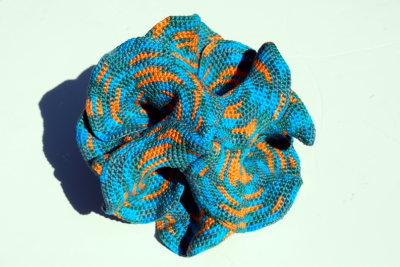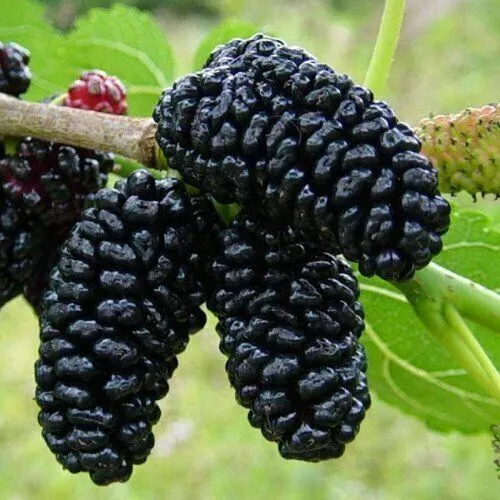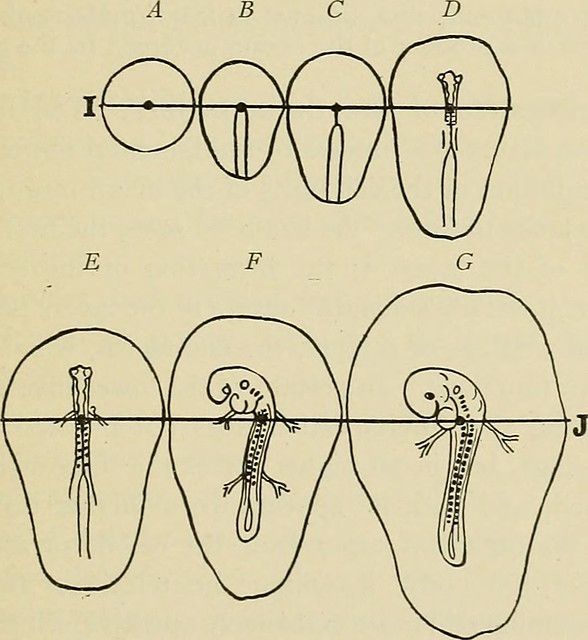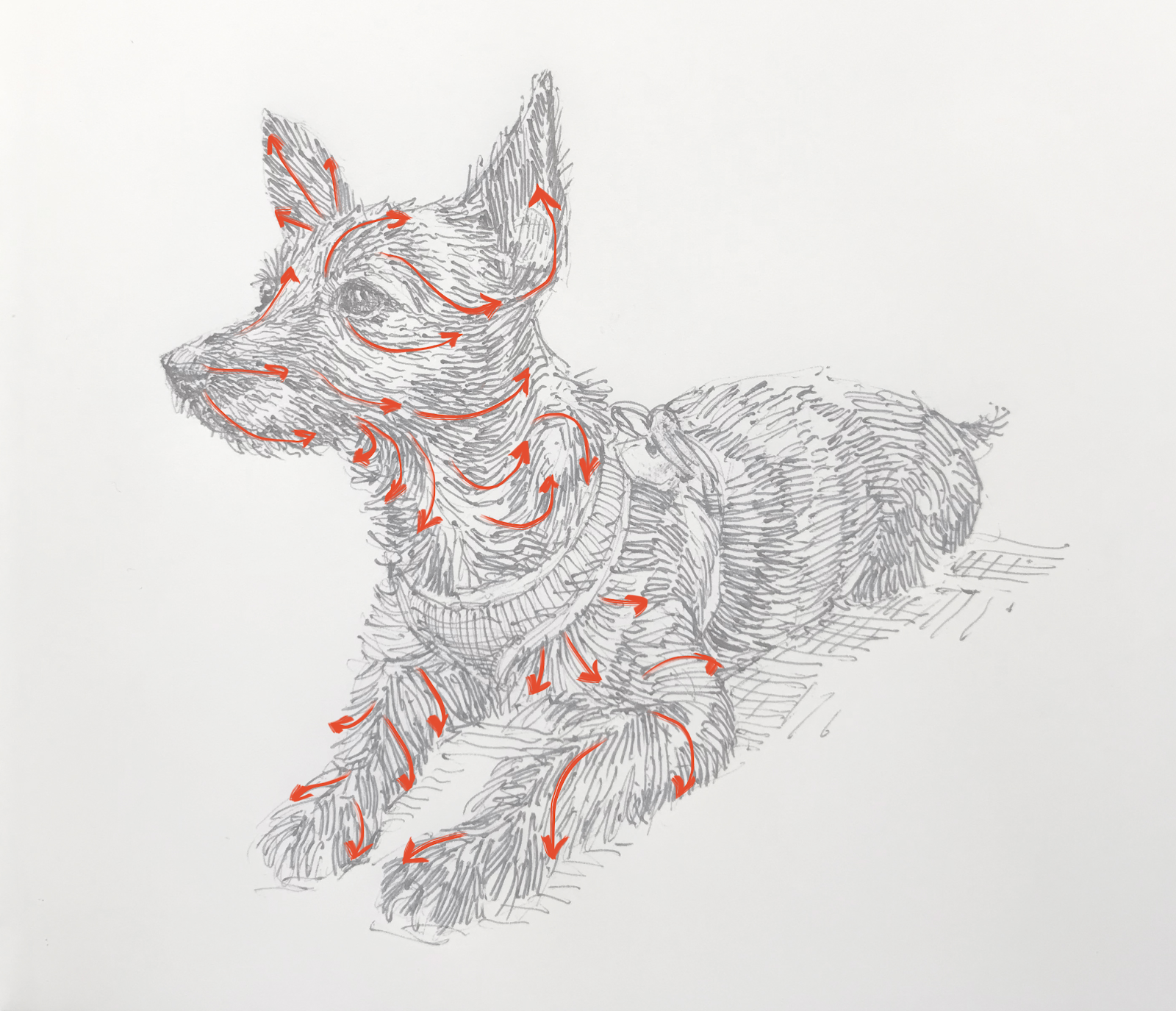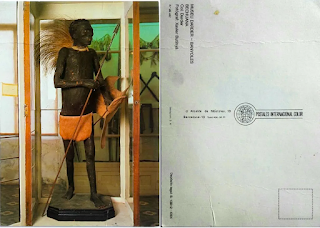Nathalie Doyen
Nathalie Doyen is a ceramicist who is very interested in colour and surface and who I have been looking at because I wanted to develop some surfaces of my own ceramics that supported the way I had been treating the surface textures of recent drawings. I have been looking at exterior events, such as fallen trees, whereby 'inner' workings are revealed, just as much as drawing ideas emerging from inside my head about what bodies might feel like inside, so I'm looking for something that suggests moss as much as bone, a clump of dirt as much as muscle.
Sketchbook drawing of ceramic idea
Textural drawing of a fallen tree
The surfaces that evolve over Doyen's ceramics are made by texturing small pieces of coloured clay that she has tinted with oxides and pigments. Her palette is developed from colour studies made from her surroundings and is carefully controlled so that the pigments sit together harmoniously. The surface that is constructed, feels as if the ceramic object has had a perfectly fitted cardigan knitted for itself, and it visually sucks you in, in the same way that any organic surface in nature does. These thoughts are now what I want to apply to ideas that came out of drawing.
I have been making images based on interoceptual imaginings and have been wanting to turn these into coloured ceramics, but have not as yet developed the right type of surface quality. Doyen's work has however helped me to think about either staining my clay or changing its chemical composition before applying it.
Nathalie Doyen
Nathalie Doyen
Max Brodel: Illustration of the musculature of bladder and urethra
Bringing back the blood
Ceramic organs with blue and red glaze mixes
I had been using the 'wet' look of Max Brodel's illustrations as a reference point, but I now think the glazes are too slick, so I will have to return to making a series a tests that will enable me to make better choices.
Doyen is a meticulous surface maker. She must spend hours developing these textures, obviously pricking the clay surface, but with a regularity that is very hard to control. This is why her surfaces feel as if they are woven, knitted or cross stitched, as they have been through a similar repetitive process, whereby a surface area gradually grows because of tiny repetitive actions. For myself, the link between the textures of woven or knitted clothing and energy flows, seems somehow intuitively important, as does the idea of a surface texture feeling as if it has emerged from inside the form, as opposed to being applied on top of it.
An idea for externalising interoceptual feelings
Body energy: A mood swing
I have been drawing images about closely woven topologies of inner feelings, such as those we might have if we were able to sense the world, like an animal, via the hair covering our body. This approach is one of my attempts to develop a more animist way into making, as well as being a recognition of various 19th century visualisations of invisible forces.
Interoceptual feeling might, I thought to myself be not unlike Foucault currents, those electromagnetic eddy currents that occur when a magnet is moved towards a conductor loop. They are called 'eddy currents' because they are very like the eddies we see in flowing water, and I was therefore sucked into trying to get to grips with my poor grasp of physics again because I wanted to tie together my feelings about the flow of liquids inside the body, with a sense of electro-magnetic energy flow, something in my mind like the chakras that you find in tantric healing traditions.The chakras are often described as energy stations that correspond to special places within our bodies where bundles of nerves and/or organs or joints are focused on the proper flowing movement of energy, this being essential to both our physical and emotional well-being. Perhaps these energy flows are also like eddy currents.Lenz's law states that a voltage induced by the change of a magnetic flux through a conductor loop generates a current in such a direction that the current running through the loop opposes the change of the magnetic flux causing the voltage. How does this work in the body in relation to my thoughts about flow and currents? Could we be like magnets passing through conductors? As we pass through for instance a forest, how does this change our internal energy in relation to walking through a room? What are the invisible energies surrounding us in the street? How do they enter and work with the forces already at work within the body? This is again not science but a sort of poetry, the mixture of the two being perhaps where I will find what I am looking for.
If you have a ring shaped conductor it can be moved towards or away from a permanent magnet. In the drawing below the magnet lies on the x axis and the ring is situated on the plane that sits between the y and z axes. If the ring is moved in the direction of the x axis, it will eventually sit around the magnet, forming a ring that the magnet will pass through. Think of a human being about to walk through a door, as they approach it, they can see into a new room and already the incoming perceptions are changing the internal dynamics of the body and mind. 
If you move the magnet to the right, away from the circular coil along axis x, the induced voltage then causes a current to flow. I.e. you will get a circulating current being induced as soon as the magnetic flux running through it varies. Actions made by changes in the electrical/chemical flow of information within the body will result in flowing movements, as muscles begin to contract and relax.
Circulating currents
The body begins to twist from the thigh
The shape of the conductor material doesn't matter - induced currents are always running through the material. However, a completely homogeneous magnetic field is more a statistical idea than a reality, in a normal case there are always inhomogeneous flux density allocations, which means that there won't be well defined areas with or without currents running. The pattern is more like a swirling water surface. That's why the induced current inside of three-dimensional conductors is called an eddy current. What's interesting is that diagrams can be used to separate out the current distribution from the magnetic field.
Electric and magnetic field around a coil of rectangular cross section. Figure 1 shows the geometry of the coil, figure 2 the distribution of current (red) and figure 3 magnetic field (blue).
The distribution of the magnetic field in various sections, shows how as you move away from the centre, the lines of the electric field become circular.
The magnetic field, as you pull away, in cross section is seen to be more circular
The dynamics of muscle and bone
The various energy flows that our bodies are part of, are I believe subtly interconnected, and some scientists have stated that there are signs of humans having a subconscious magnetic sense. Many animals, from pigeons to turtles, use a magnetic sense to navigate and it has come to the attention of researchers that humans might also have the power of magnetoreception. As reported in the Guardian, Prof Joseph Kirschvink has stated he believes that, “We have not as a species lost the magnetic sensory system that our ancestors [millions of years ago] had,” he then goes on to state that, “We are part of Earth’s magnetic biosphere.”
The Earth’s magnetic biosphere
It is early days yet for any provable data to emerge from this type of research, but it suggests that in the past humans could tell directional difference in a similar way to certain other animals, perhaps due to a mechanism involving special cells containing iron-based crystals that could rotate rather like the needle of a compass, opening or closing openings in cells. Whether or not this is true, doesn't effect the imaginative possibilities that it induces, and for myself it gives me a way of fusing together possibilities for the intermingling of various other forms of flowing energy.
The flow of leg muscles around bones
Can be compared with the flow of water in a stream around rocks
The flow of water in a stream
Oceanic currents and gyres
We emerged out of the sea and we are still psychically connected with it. The composition of our blood, shows a 98% match between it and sea water. Our bodies have been shaped and formed by water and in effect, we have an ocean inside us. In 1897 French physician Rene Quinton discovered a 98% match between our blood plasma and sea water, or what has been called 'ocean plasma'. The sea's energy flows have their own terminology. Ocean currents are coherent streams of water moving through the ocean and include both long, permanent features such as the Gulf Stream, as well as smaller, episodic flows in both coastal waters and the open ocean. They are formed primarily by wind blowing across the surface of the ocean and by differences in the temperature, density and pressure of water and are steered by Earth's rotation as well as the location of the continents and topography of the ocean bottom. Gyres are spiralling circulations thousands of miles in diameter and rimmed by large, permanent ocean currents, and eddies are smaller, temporary loops of swirling water that can travel long distances before dissipating.
All of these images seem to have something to do with what I'm searching for in relation to the surfaces of the objects I need to make. Knitted, flowing totalities that reference the wider interconnectedness of inner and outer realities, the fitting together of the body and the cosmos. All that stuff that old religions used to do, alongside a growing awareness of the fact that ancient Chinese thinkers viewed the cosmos as a complete and complex “organism.”
A while ago I posted some thoughts about Daina Taimina and her crocheted forms of hyperbolic geometry. Seeing Doyen's work reminded me of Taimina's surfaces, which must have been lying around in my subconscious for a while, waiting for an opportunity to be used in my ceramics. Taimina realised that we need to touch things in order to really grasp what they actually are. She understood how a line, generated by a fold, could operate in hyperbolic space. Drawing, as in geometry is vital to this understanding, but in this case it becomes clear that without the type of drawing we associate with drawing threads, she would not have been able to develop the idea. Perhaps I also need to look at how clay can be made into threads and how surfaces can be woven?
See also:






.png)



















